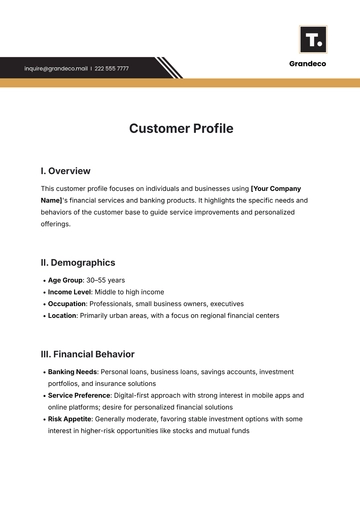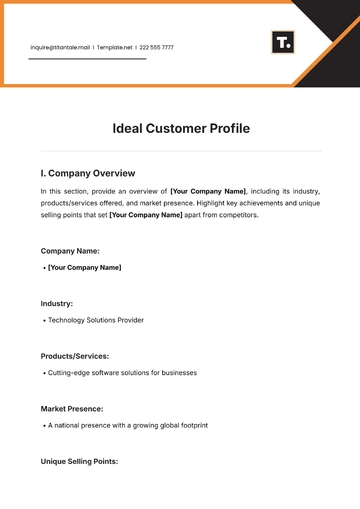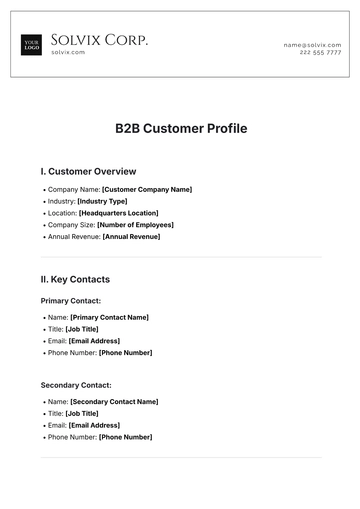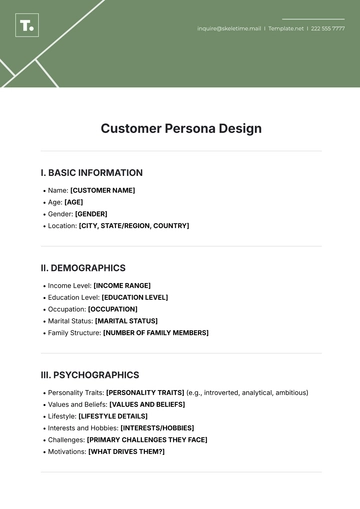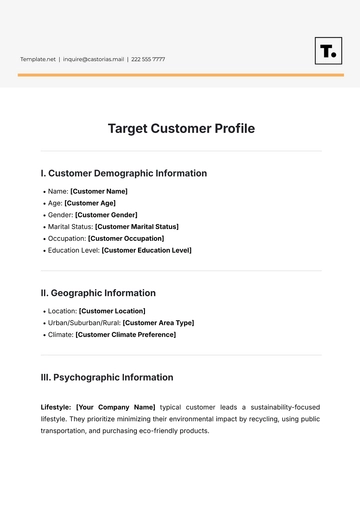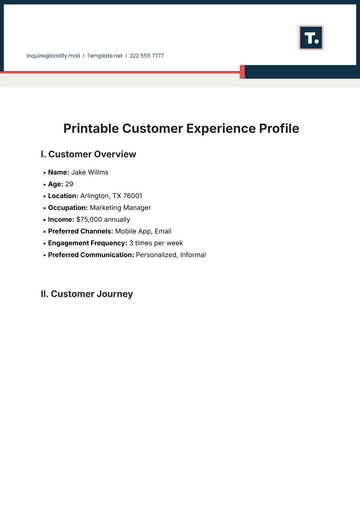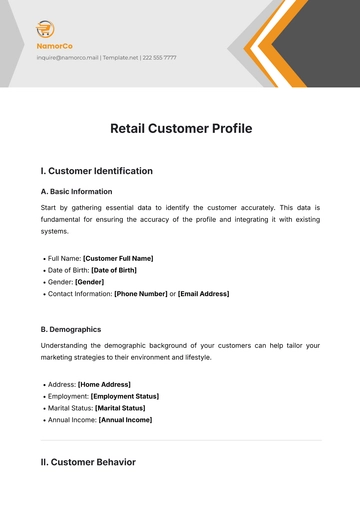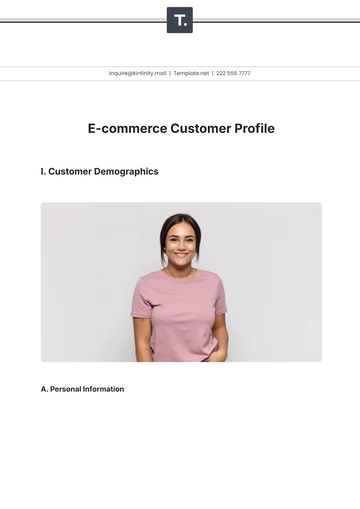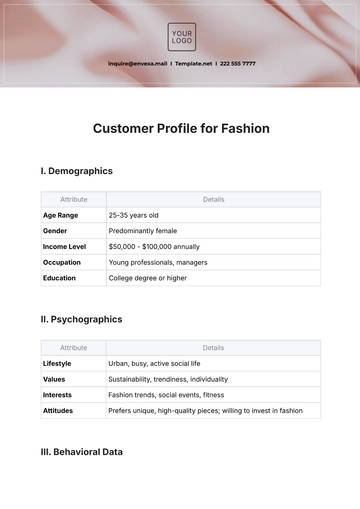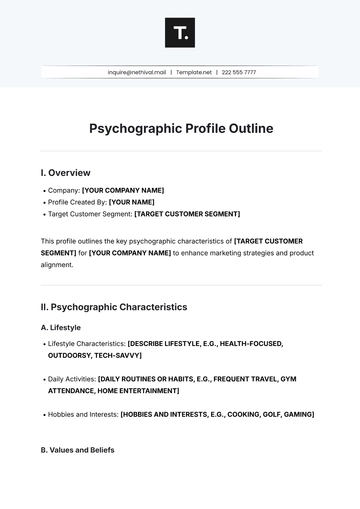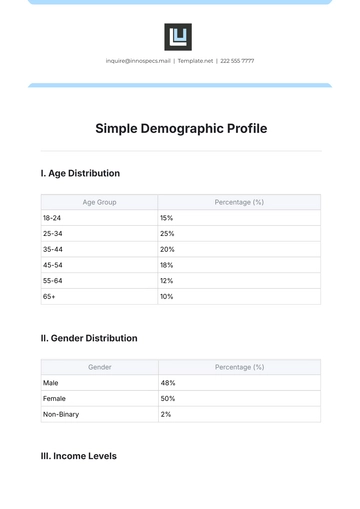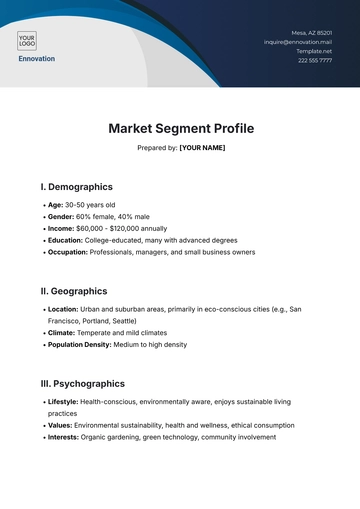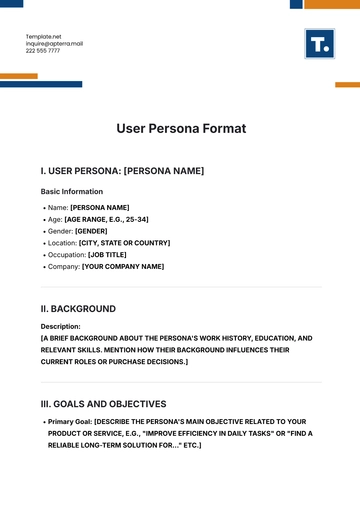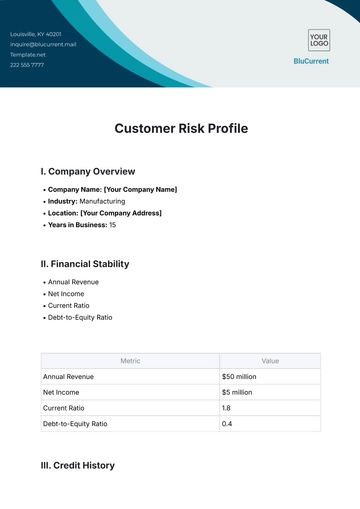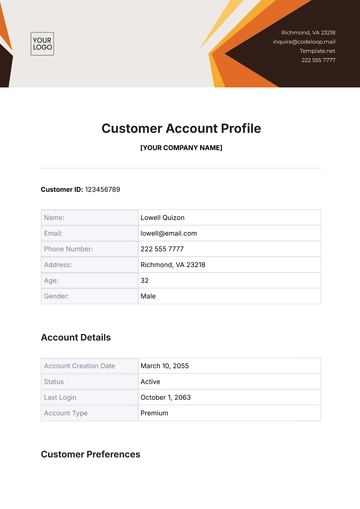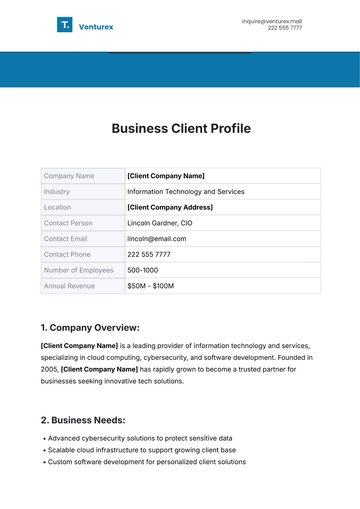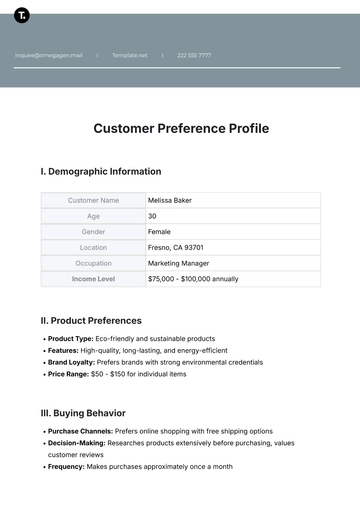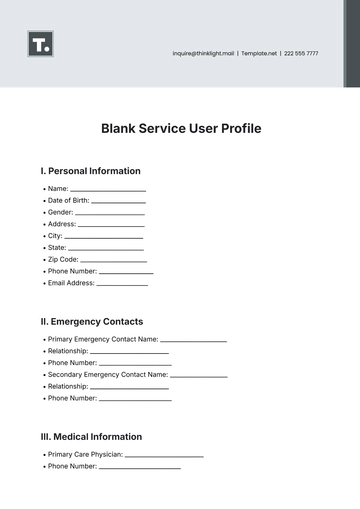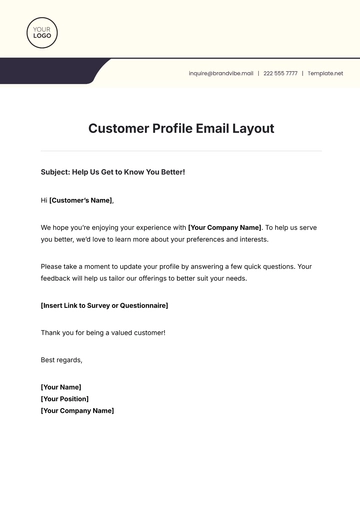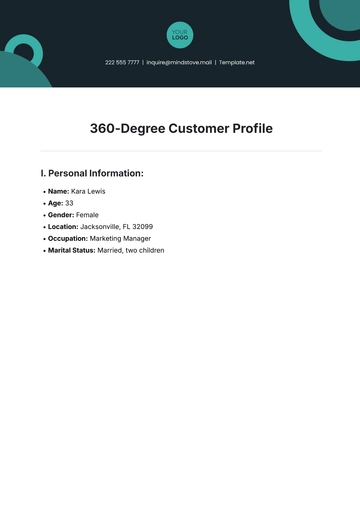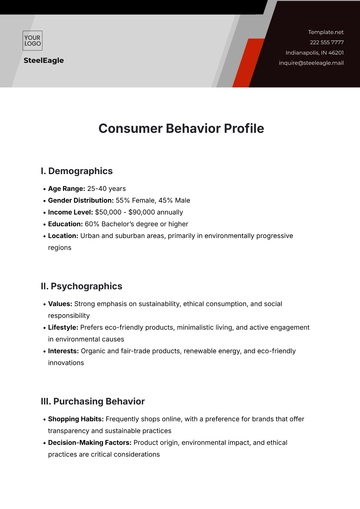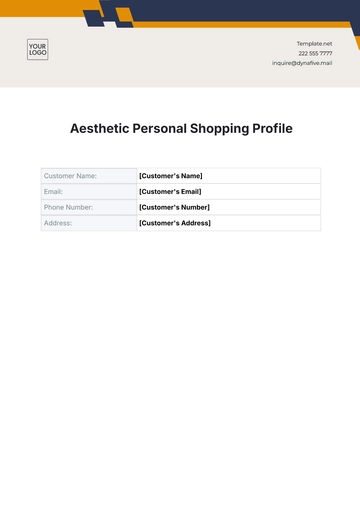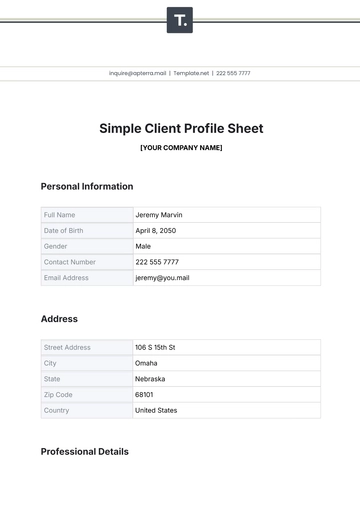Free Ideal Customer Profile

I. Company Overview
In this section, provide an overview of [Your Company Name], including its industry, products/services offered, and market presence. Highlight key achievements and unique selling points that set [Your Company Name] apart from competitors.
Company Name:
[Your Company Name]
Industry:
Technology Solutions Provider
Products/Services:
Cutting-edge software solutions for businesses
Market Presence:
A national presence with a growing global footprint
Unique Selling Points:
Advanced AI integration
24/7 customer support
II. Ideal Customer Persona
Describe the ideal customer persona for [Your Company Name]. Include demographic information, psychographic traits, pain points, goals, purchasing behavior, and any other relevant characteristics.
Demographic Information:
Age range: 30-50 years
Gender: Male/Female/Other
Income level: Middle to high-income
Education level: College-educated
Psychographic Traits:
Lifestyle: Tech-savvy professionals
Personality traits: Innovative, results-driven
Values: Efficiency, cutting-edge technology
Pain Points:
Outdated software systems
Lack of automation
Goals:
Increase operational efficiency
Improve customer experience
Purchasing Behavior:
Buying frequency: Regular software updates
Preferred channels: Online platforms, industry events
Budget considerations: Value-driven purchases
III. Customer Journey Mapping
Map out the customer journey for [Your Company Name] by outlining the stages from awareness to advocacy. Identify touchpoints, interactions, and key messaging strategies at each stage.
Awareness Stage:
How does the ideal customer become aware of [Your Company Name]?
Key touchpoints: Social media, industry publications
Consideration Stage:
What factors influence the customer's decision-making process?
Key interactions: Product demos, webinars
Purchase Stage:
How does the customer make a purchase decision?
Preferred payment methods: Credit card, invoice billing
Post-Purchase Stage:
How does [Your Company Name] ensure customer satisfaction and loyalty?
Post-sales support: Dedicated account managers, training resources
IV. Marketing and Sales Strategies
Outline marketing and sales strategies tailored to reach and engage the ideal customer persona. Include content marketing, lead generation, and customer retention initiatives.
Content Marketing:
Content types: Blogs, case studies, whitepapers
Topics of interest: AI integration, automation benefits
Lead Generation:
Lead sources: Website traffic, industry partnerships
Lead nurturing tactics: Email campaigns, personalized outreach
Customer Retention:
Retention strategies: Quarterly check-ins, loyalty discounts
Feedback mechanisms: Customer surveys, feedback forums
V. Sales Enablement
Provide tools and resources that empower the sales team to effectively engage with and convert leads into customers. Include sales scripts, objection handling techniques, and CRM integration.
Sales Scripts:
Key messaging points: ROI analysis, competitive advantages
Objection handling: Addressing security concerns, customization options
CRM Integration:
CRM platform: Salesforce
Data management: Lead scoring, pipeline tracking
VI. Customer Support and Success
Detailed customer support and success strategies to ensure a positive customer experience post-purchase. Include support channels, response times, and escalation procedures.
Support Channels:
Channels available: Phone, email, live chat
Response times: Within 24 hours for non-urgent queries
Escalation Procedures:
Escalation levels: Tiered support levels
Resolution timelines: Escalation within 48 hours if the issue unresolved
VII. Feedback and Improvement
Establish mechanisms for collecting customer feedback and use insights to continuously improve products/services and enhance the overall customer experience.
Feedback Collection:
Feedback channels: Surveys, social media listening
Feedback frequency: Quarterly surveys, real-time feedback
Improvement Initiatives:
Actionable insights: Identifying trends, addressing pain points
Continuous iteration: Regular product updates based on feedback
- 100% Customizable, free editor
- Access 1 Million+ Templates, photo’s & graphics
- Download or share as a template
- Click and replace photos, graphics, text, backgrounds
- Resize, crop, AI write & more
- Access advanced editor
Define your target audience precisely with Template.net's Ideal Customer Profile Template. This editable and customizable tool helps you create detailed profiles of your ideal customers based on demographics, psychographics, and buying behaviors. Align marketing strategies and product offerings to attract and engage with your ideal customer segments effectively. Editable in our AI Editor Tool, this template guides your business towards targeting and acquiring high-value customers.
